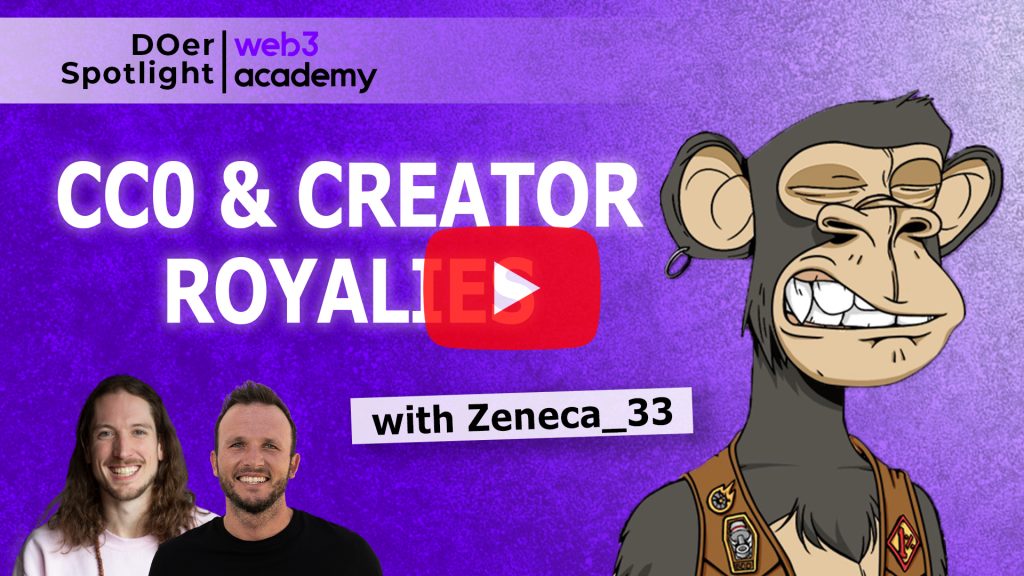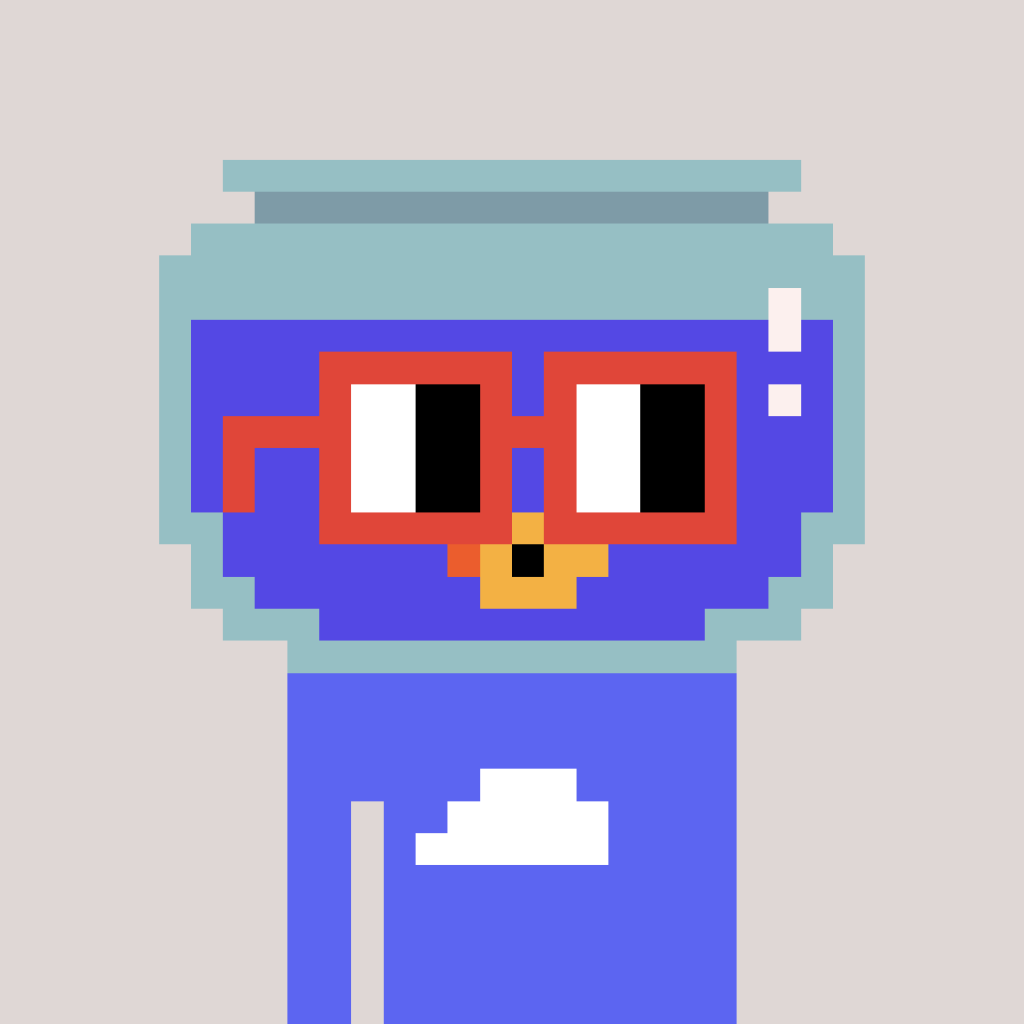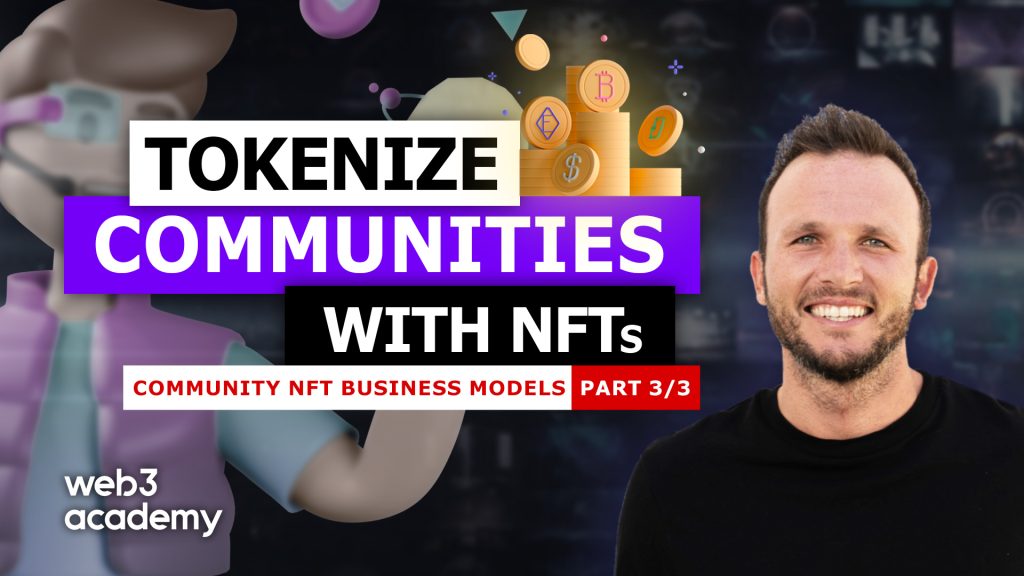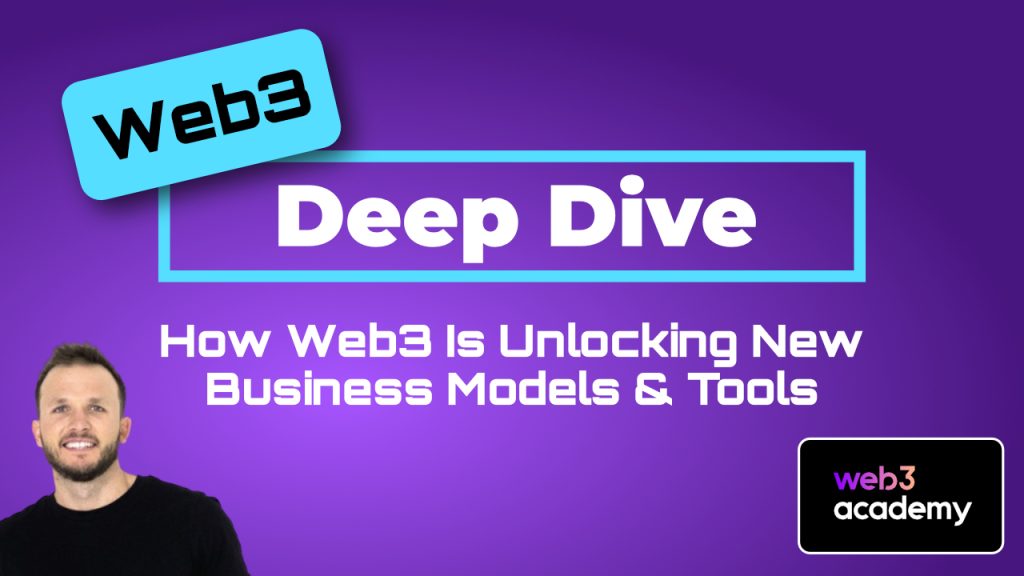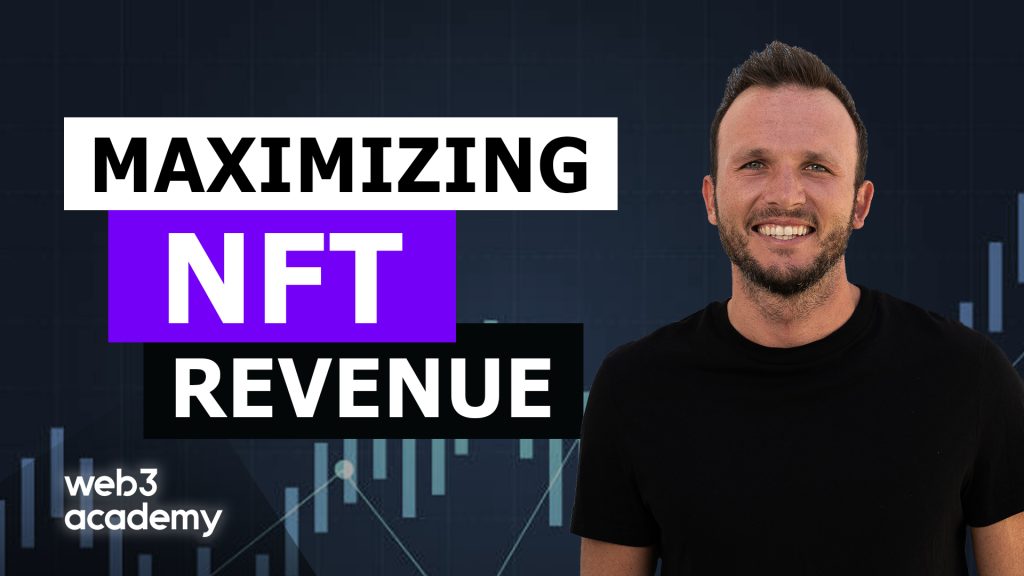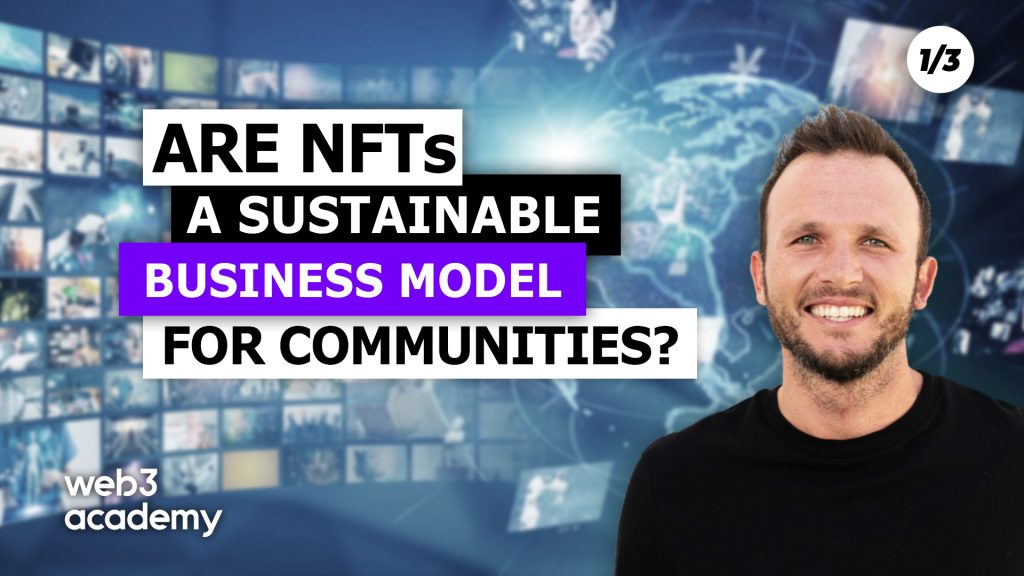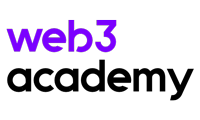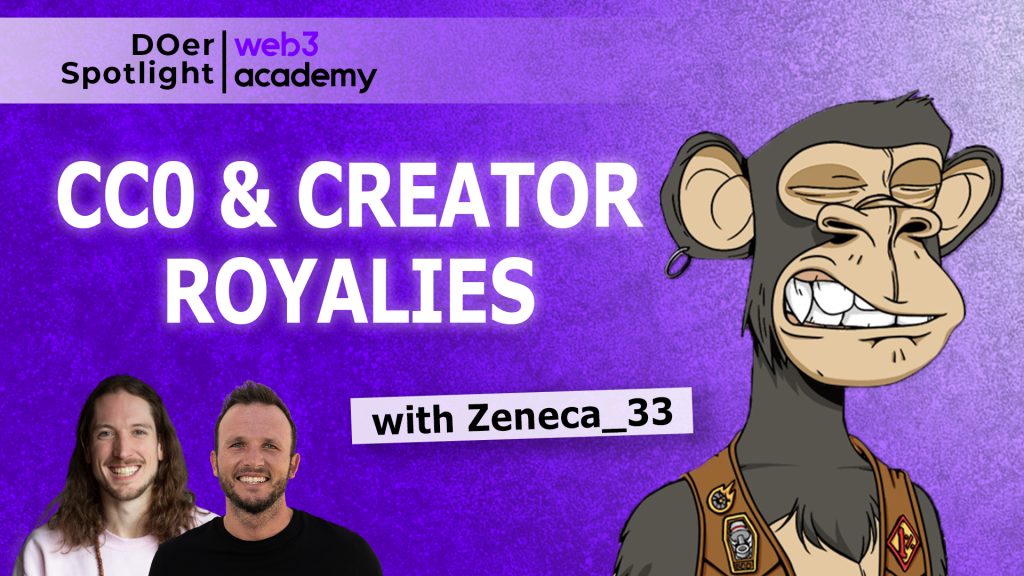
NFT Business Models After Advising 100+ Businesses | Zeneca_33
Gm Web3 Academy DOers!
We often hear of the great benefits of implementing Web3 tools, such as NFTs, into existing business models.
However, it’s all super broad and often a fantasy.
If we want businesses to adopt Web3, we must educate them with actionable information, not something that might happen 10 years from now.
To accomplish this, we sat down with Zeneca, founder of Zen Academy, a community aimed at educating people about Web3 & NFTs, to discuss NFT business models.
Zeneca is also the founder of the 333 club, where he acts as a consultant for other businesses looking to get into the space.
Zeneca has advised hundreds of businesses and NFT projects and is therefore perhaps one of the most qualified people to talk about this topic.
Let’s get into it! 🚀
Wait 🚥 Not into reading? 📖
Sit back and watch on Youtube 👀 or listen on Spotify or Apple Podcasts 🎧
The NFT Mind Map (What Kind Of NFTs Are There?)
For most people (especially those that aren’t active in web3), NFTs equal worthless JPEGS.
It’s therefore important to dedicate a section to set the context and express which types of different NFTs are out there.
- Community NFTs: Generally a scarce # of NFTs which revolve around access or participation of a community. Think of these NFTs like equity or ownership of a community or business. Examples of these are BAYC, CryptoPunks or Nouns.
- Product or service NFTs: Used to facilitate the commerce and/or utility of a product or service within a business. Think of these NFTs as a swiss army knife for businesses which can improve the experience, function and utility of a product or service.
Examples of these are NFT tickets or similar to what Zeneca is doing with the 333 project, where he “NFT’d” his personal time for consultancy
- Collectible NFTs: Digital collectibles. The digital version of stamps, trading cards, art or anything else that one might buy, earn or trade for the sole purpose of collecting.
Examples here are Beeple’s art or Artblocks.
- Soulbound NFTs – Aka Non-transferable NFTs which stamp data points about one’s reputation, experiences and identity. Examples of these are the Web3 Academy Proof Of Completion NFT after completing our FREE Web3 Rabbit hole course.
This has been a rather short introduction to which different types of NFTs there are out there and what they can be used as. Don’t worry, We’ll write a deep dive on this topic in the next couple of weeks! Stay tuned for that. 👀
For now, I hope this introduction was enough to create context for the rest of the article!
Let’s continue… 👇
Which Benefits Do NFTs Unlock For Existing Businesses?
NFTs have endless possibilities and we could discuss the use cases forever. However, those would be valid only for specific businesses.
What we want to focus on in this section are two benefits that NFTs unlock for each and every business out there: digital ownership and branding to a younger audience.
Digital Ownership
Right now, we don’t own most of the stuff on the internet. Our social posts are owned by Twitter and Facebook while our data is owned by Google and TikTok. Truth is, we own almost nothing on the internet.
Naturally, this creates a need for the users to start owning their own stuff. And NFTs allow that.
But how does that benefit businesses?
Well, users are interested in anything and everything that grants them ownership. Putting a piece of art or collectible in the hands of a user will enable your business to create a more loyal customer base.
They will feel a part of your brand and are more likely to become an engaged community member or true power fan.
It’s a win-win!
Branding To A Younger Audience
Question: Why do you think that Tiffany’s Co. released an NFT collection? They certainly don’t need the money.
They did it to brand a younger audience, realizing that most of their customers are older people (who afford and are willing to buy expensive jewellery).
The young generation have almost their entire lives on social media and that’s the only place where brands can reach them. If you’re a big brand with low exposure on the internet, consider changing your approach or you’ll get left behind!
🎉 Tweet Of The Week 🎉

What Should Brands Think About When Getting Into The NFT Space?
The most important thing is to define your WHY, just like Simon Sinek’s famous book says, Start With Why!
Ask yourself: How can my business benefit by implementing NFTs?
Once you have a certain answer to that question, you can roll. However, if you don’t have a clear why, then simply don’t do it! The truth is that Web3 isn’t suitable for everyone.
This space also comes with heavy speculation, unfortunately. Not having a clear reason (why) will mean that you’re playing recklessly with your customers’ money, something they won’t appreciate and you’ll end up destroying your brand reputation.
The bottom line is to avoid running around with a hammer looking for nails. First identify the benefits and the value that you can unlock for your users / consumers / fans by implementing NFTs into your business model.
After you’ve made your decision, it’s time to look at suitable revenue models for your project! 👇
What’s The Best Revenue Model For An NFT Project?
Right now, the most common revenue model for an NFT project is to raise funds at the mint and make consistent revenue from royalties.
However, this model is broken because you are essentially relying on your community to constantly trade your NFT, and this goes against the idea of building a sustainable community.
What we often see is projects releasing brand new collections, under the same brand to continue to raise money. However, thus far, only BAYC has been successful (having released Bored Apes, Mutant Apes and then the $APE token). At the same time, thousands of projects have failed miserably.
Therefore, there is no formula or framework as to how your revenue model should be. Everybody is still learning and testing.
One solution that Zeneca suggested is that you turn your project into some kind of agency (marketing, consultancy etc.) which generates an extra income. This way, you can have a cash flow and predictably develop the project.
An Idea For Starbucks To Implement NFTs Into Their Business Model
Step 1: Create a collection of 1000 NFTs
Step 2: Sell them for 1ETH to 1000 people
Step 3: Give each NFT holder 1 free coffee per day for 5 years at all Starbucks’ shops in the world
What will happen?
- You’ll sell out and make 1000 ETH ($2M at the time of writing)
- You’ll provide value (a discount) to the buyer because for 1ETH (2000 dollars), he/she gets free coffee for 5 years. (At 5$ / cup, it costs $10k to drink Starbucks daily for 5 years)
- You’ll make the greatest word of mouth campaign because everyone will wonder how on earth their friend gets free coffee every day at Starbucks
- You will have a core community of 1000 people positioned all over the world who will become your brand ambassadors and for whom you can provide even more value through airdrops and other exclusivities (all possible since NFTs are on-chain).
From here, the possibilities are endless.
Is this a good idea? Respond to this email right now with YES or NO!
😂 Meme Of The Week 😂

What’s Missing For NFTs to Unlock Their Full Potential?
Let’s be honest… using NFTs today is a pain in the butt. Only hearing the words: seed phrase, metamask, peer to peer or blockchain gives me anxiety.
It will take a lot for Starbucks to be able to implement the idea above. Some of these things include:
- Education and awareness so that once implemented, people will know how to use the features
- Regulation so that established companies can easily join the space without worrying about the legal reasons
- Infrastructure. Right now, using NFTs is just implying extra friction and unnecessary steps. The usage of NFTs has to be as simple and seamless as possible.
The bottom line is that we’ve got a lot of work left to do!
The best thing you can do now is to start small, experiment and learn. Keep an eye on what other businesses are doing and iterate from there.
The best way to stay up-to-date on NFT innovation is to simply listen to the Web3 Academy Weekly Rollup on Youtube, Spotify or Apple Podcasts. We have an entire section each week that discusses the best and the worst of NFT launches and innovation.
Thanks for reading! ✌️
Connect with Zeneca on Twitter
🚀 Action Steps For Web3 DOers 🚀
👉 By replying to this email with YES or NO, tell us if you think Starbucks should implement our idea into their business model!
👉 Take our FREE Web3 Rabbit Hole Course to get up-to-speed on the foundational components of Web3 so you can confidently build, work, or use the fastest growing technology in history
👉 If you want to learn more about the future of NFTs? Check out Jay’s 8 takeaways after attending NFT NYC

